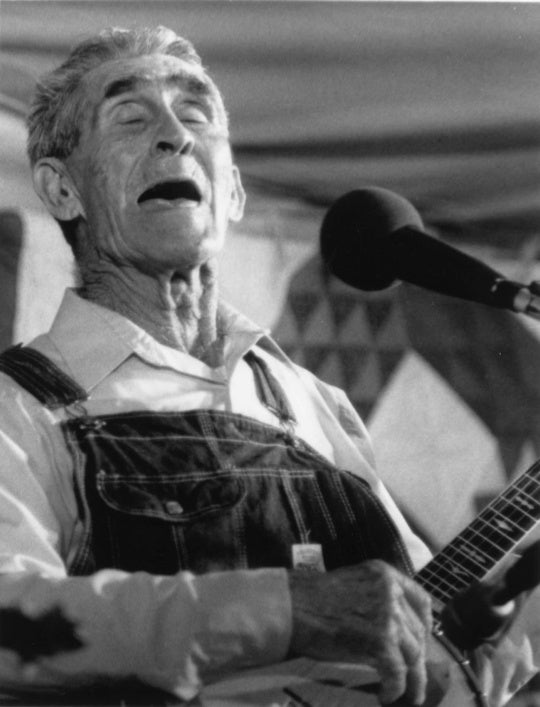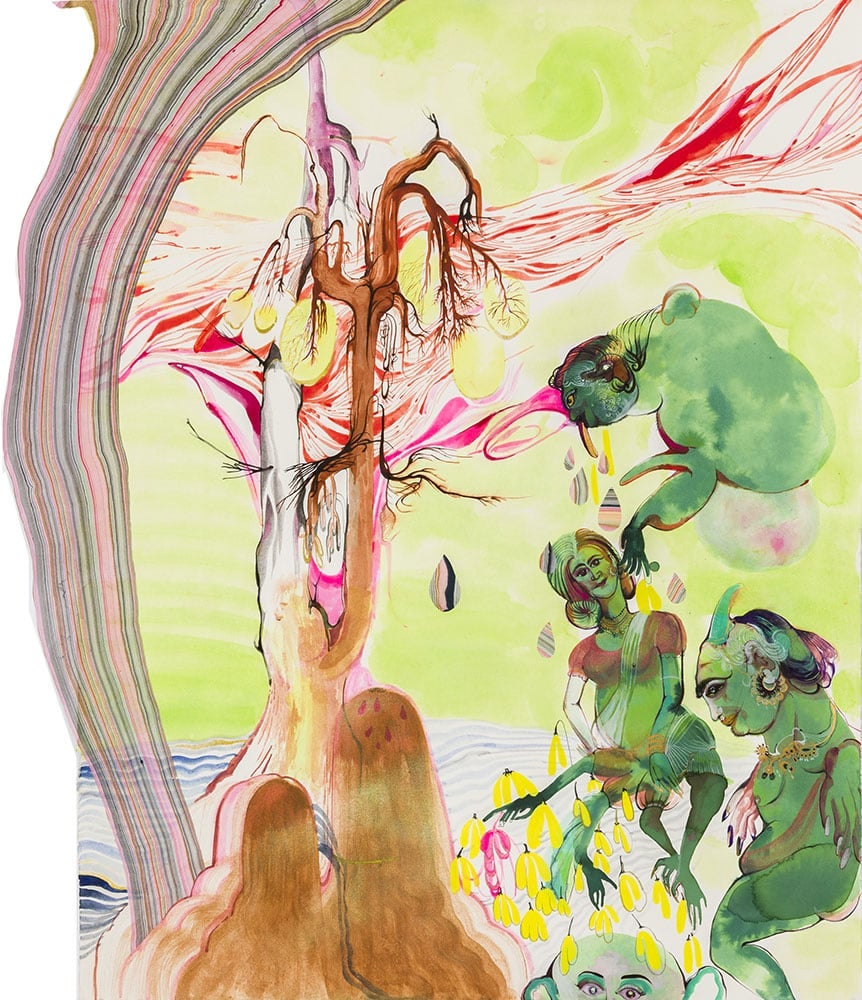
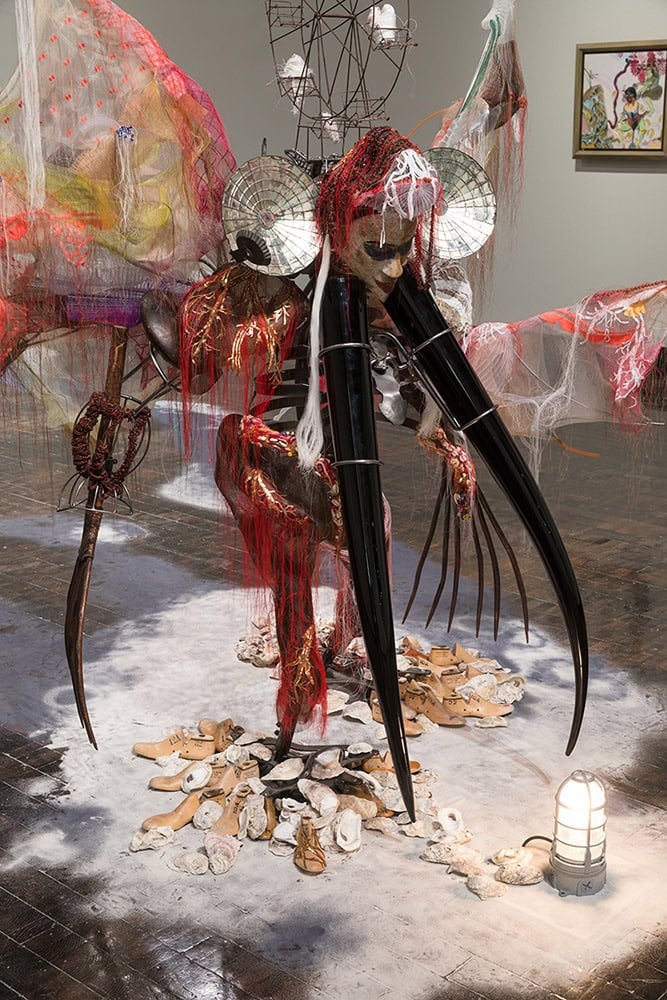
The first thing I felt when looking at Rina Banerjee’s sculptures and installations was immense fear. There is something contagious, dangerous, poisonous about the shapes found in her work. Perhaps it’s the delicate white gossamer-esque strands that remind me of cobwebs, the long curved obsidian objects like talons or incisors, the uncanny valley of the humanoid mask. The uncanny valley alone is frightening to contemplate. For what purpose has my body been trained to react with fear to something that looks like me, but isn’t quite me? It opens up a true Pandora’s box of horrors. Some say vampires are actually humanoid insects who have just taken the shape of their prey to become better predators. What was here before that frightened me so much that it imprinted fear upon my human genes? What am I actually afraid of when I look at Banerjee’s work? Perhaps it is the fear of losing myself, losing my identity. But of course, as a Black American, I simultaneously have no identity and perhaps the strongest claim to “American” identity. Is it the churning of capitalism, the incessant creation and death all around me? Banerjee is a voracious collector of found objects, and capital is nothing if not prolific. Perhaps it doesn’t matter if I can answer this. The shudder that ran up and down my spine while looking at Banerjee’s mask perched upon talon legs did the most wonderful thing: it reminded me that I am fearful, and, in that fear, I am also at my most alive.
— Jasmine Amussen
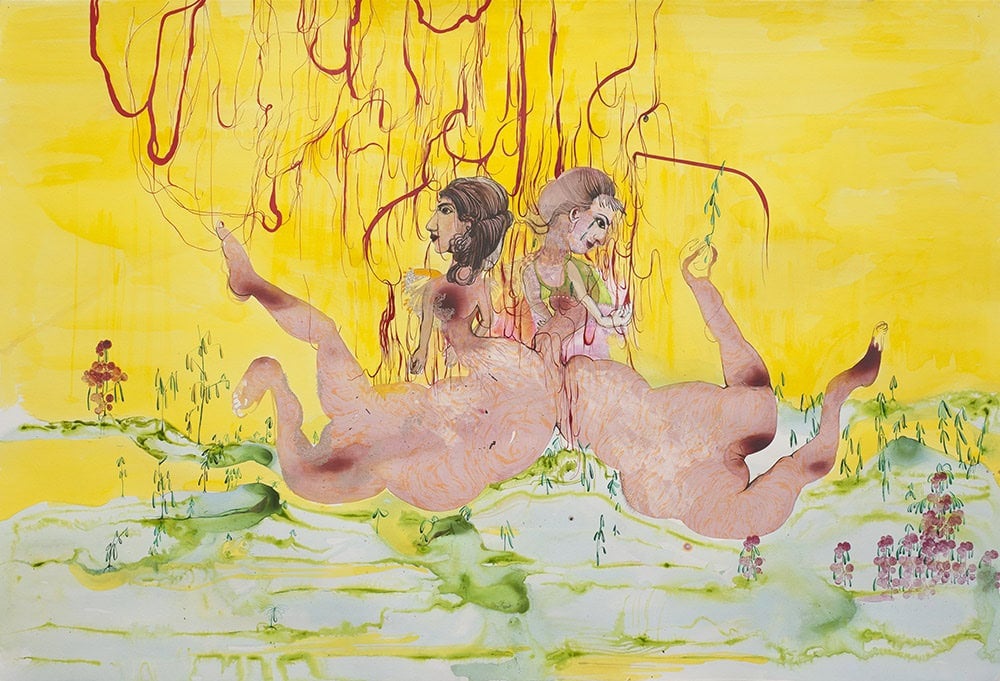
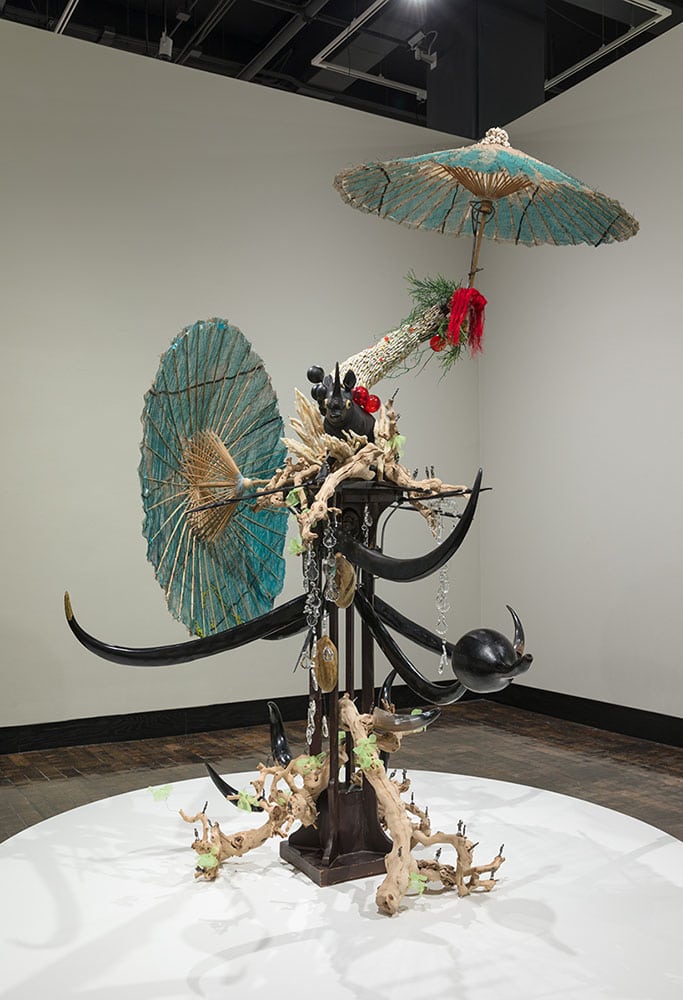
Rina Banerjee explores the idea that in the current social imaginary, characteristics of society that were once thought to anchor identity—languages, political and economic ideologies, nationality, race, and sexuality—limit the ways individuals can define themselves or be defined by others. While the resulting ambiguity may seem to be a sign of cultural disarray, works in this exhibition offer the tantalizing possibility of a more inclusive and open-ended future.
from the exhibition text
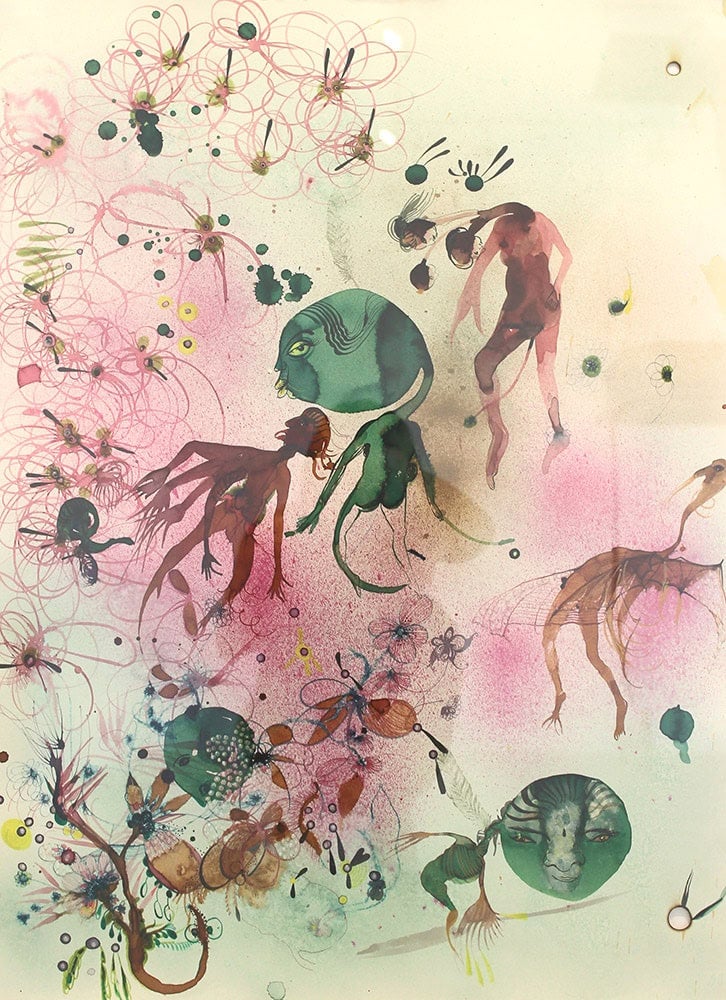
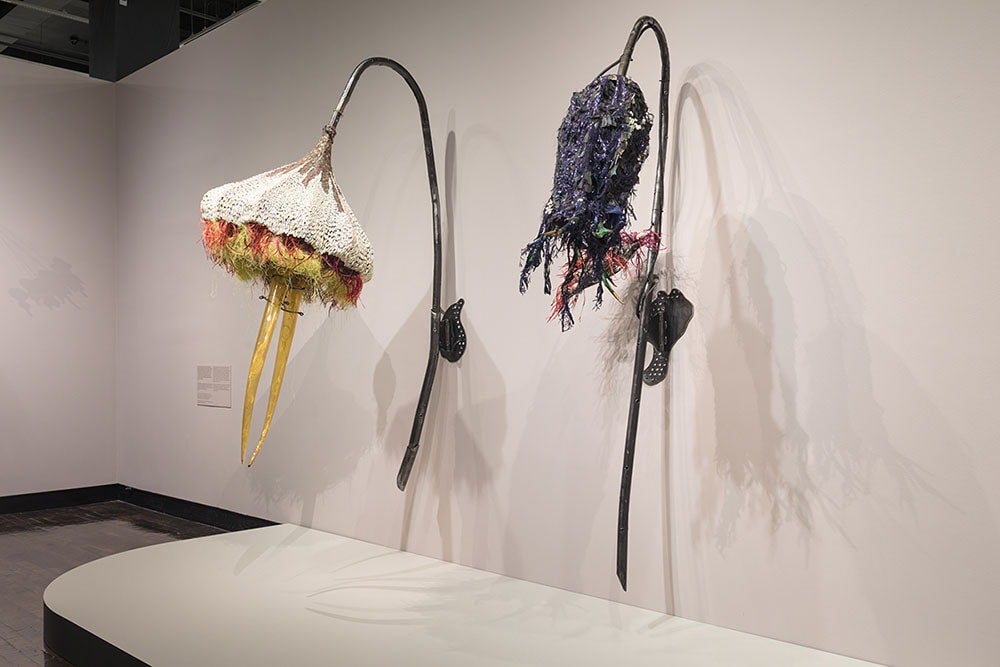
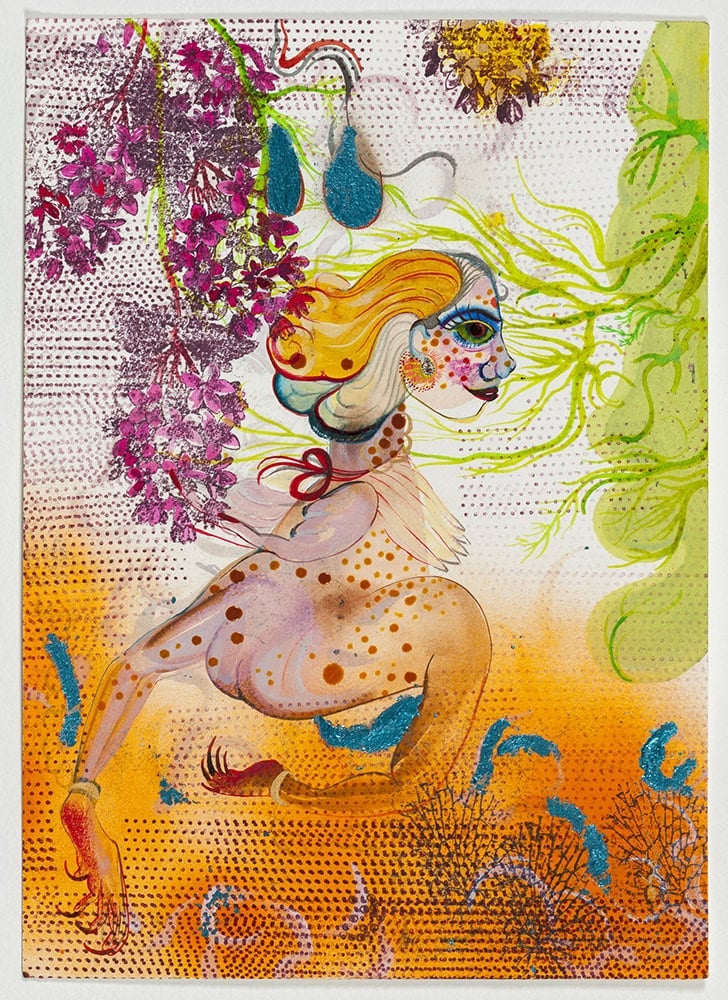
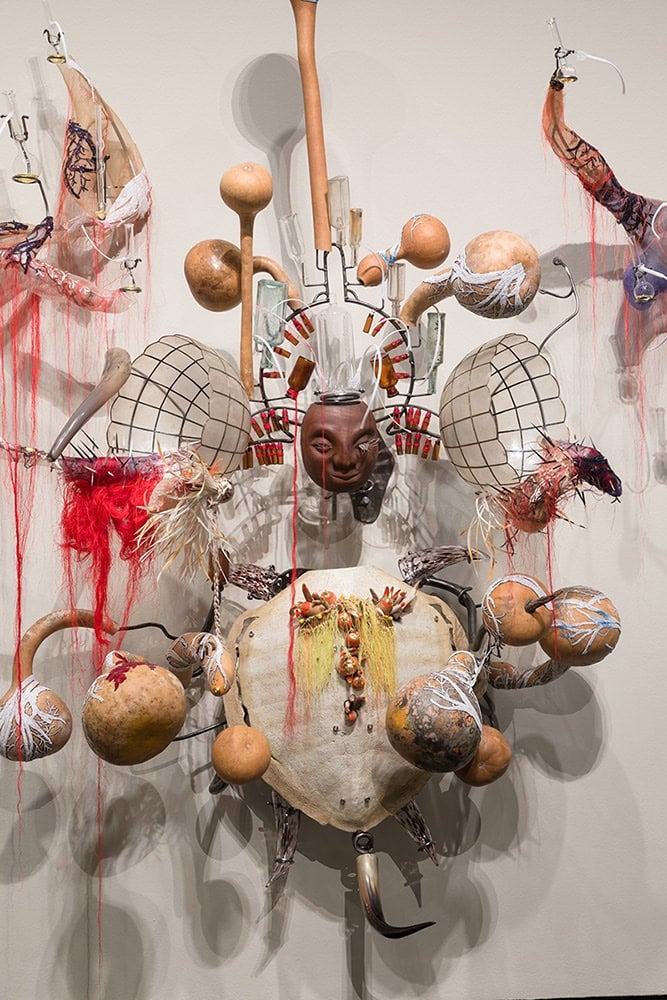
Rina Banerjee: Make Me A Summary of the World is on view at the Frist Art Museum in Nashville through January 10, 2021.

